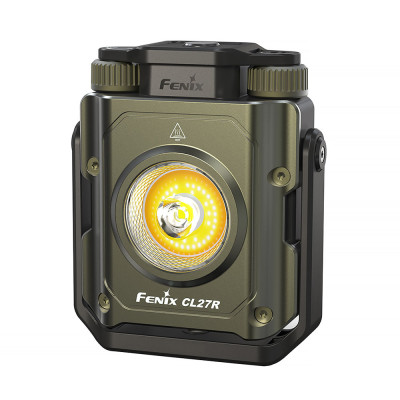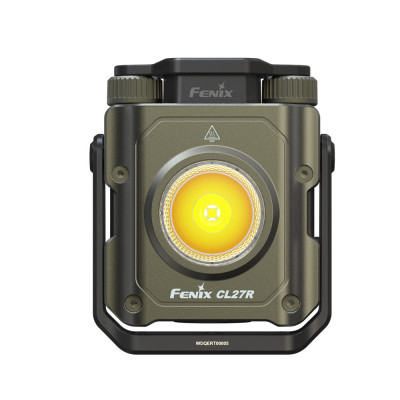Field Testing of the CL27R

The Fenix CL27R camping lantern is one of the manufacturer’s most interesting new products for the season. It is packed with intriguing features, such as an innovative user interface with stepless rotary switches, magnet and tripod mount, 360° adjustability of the handle, and the ability to be charged with an external power source. Maximum brightness is promised to reach up to 1600 lumens, with a light range of 180 m. At first glance, the model even seems to be cleverly designed. We examined the functionality of this new product in outdoor use.
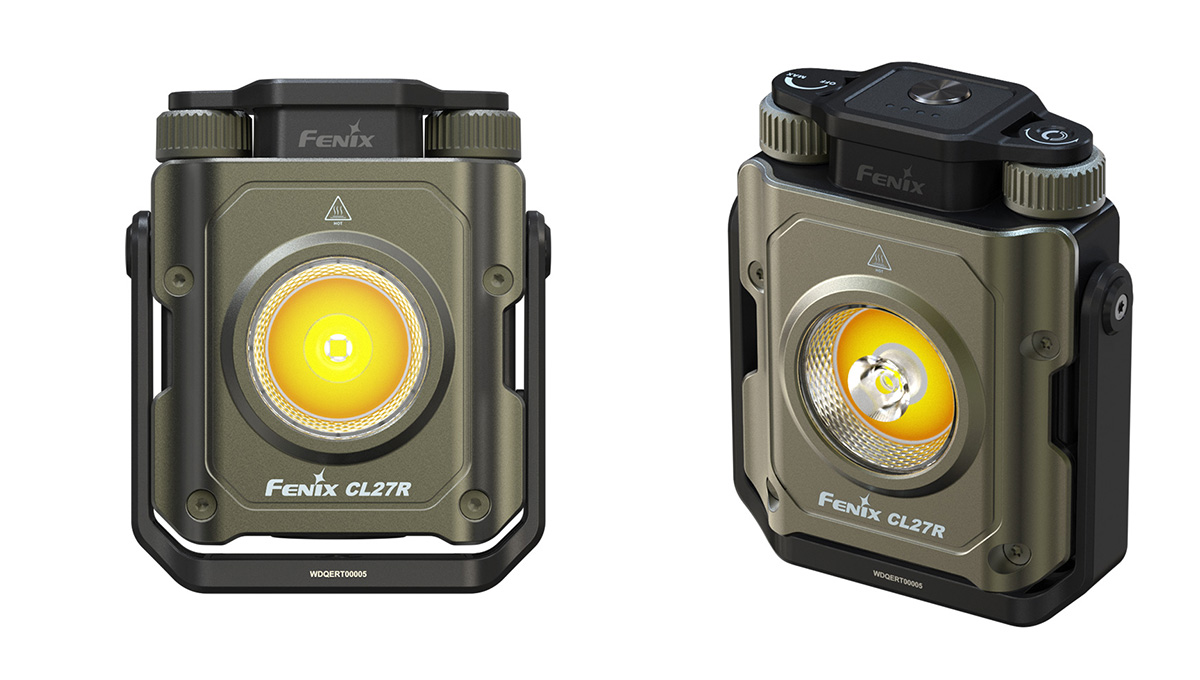
Structure and Its Advantages
Traditionally, camping lamps have a cylindrical structure. Its advantages include light diffusion into the surrounding environment, a compact size, and suitability for both outdoor and indoor use, such as in a tent or cabin. A drawback of the cylindrical structure is that it is difficult to direct light to a specific point, which may not even be possible or at least not very effective.
In the new model, the cylindrical shape has been replaced with an almost square, flat frame part, which is attached to a rotating handle/mount on the sides. The light in the center of one side of the frame is adjusted using rotary and push buttons located on the top of the frame. This structure allows the light to be directed at the desired point and the handle to be positioned relatively freely. The tested unit was in Wild Green, a forest green shade that at least appeals to the tester's eye. Additionally, the design is successful, and the lamp looks professional, valuable, and modern.
Battery and Charging
The lamp uses a 21700 standard battery with a large capacity of 5000 mAh. The cover of the battery compartment is located at the bottom of the lamp. Due to its smooth surface, it requires opening with the included coin-shaped plastic tool or a larger coin. The cover is protected with an O-ring against water and dirt. The lamp has an IP66 rating for water and dust resistance.
The lamp is charged using the included charging cable through its USB-C connection. The connection is protected by a rubber cover. Unfortunately, the cover tends to hang down when closed, which prevents the lamp's handle from rotating over it. This gives the impression that the protective cover is not entirely well-designed. It was easiest to get the protective cover in place by first pressing it down from the tab side and then sliding a finger toward the "hinge side" of the protective cover. The battery charges from empty to full in just over 2 hours with a maximum charging power of 14 W. The charging status is indicated by a four-segment LED indicator on the cover. The charging port does not have the ability to output power, meaning the lamp cannot be used as a power bank, for example, to charge a phone.
Charging with an External Power Source
It is possible to connect an external power source to the lamp's charging port. Using external power requires that the lamp's battery is in place, meaning the lamp cannot be used without a functioning battery in the battery compartment. We tested the power supply function with two different external power sources, one of which was the Fenix Superraptor 3 Power Extender, which we previously tested. The lamp's battery was drained before each test. When an external power source is connected to provide power to the lamp, the charging indicators light up, and the lamp can also be used simultaneously. The result was the same with both the manufacturer's own external power source and another manufacturer's, allowing for charging with the desired power source.
Using an external power source for charging requires that the handle is not in a directly downward position due to the location of the charging port. This practically makes it difficult or at least quite cumbersome to charge the lamp with external power when it is mounted on a tripod, especially if you want to use the lamp at the same time. Hanging the lamp, especially on a magnet, along with simultaneous use and charging with external power can also prove to be a challenge. It would be best if the lamp were placed on a flat surface if you want to use it and charge with external power simultaneously.
Mounting Options and Their Function
The handle features both magnetic mounting and a 1/4” thread for tripods. The strength of the magnet is sufficient to hold the lamp in place even on larger steel pipes and flat surfaces. The magnetic mount, along with the built-in friction in the handle's joint, allows the lamp to rotate freely around the handle while remaining at its set pivot point. This is particularly useful when illuminating, for example, a car's engine compartment or a metal workbench.
The tripod mounting option increases usability, and the lamp also functions as lighting for photography or work, both indoors and outdoors. The lamp can also be hung by its handle, for example, on a branch. Due to the design of the handle, hanging it on a hook requires a sufficiently large hook or alternatively the use of a cord, and the smooth surface of the handle does not guarantee that the hook/cord remains centered at the handle's balance point. The lamp's hanging options can be improved with a 1/4” threaded D-ring that fits the handle's thread, which can be purchased at camera shops. Such a mount would be an excellent addition to the next version of the model as standard equipment.
The lamp can be used on a flat surface both on the downward-turned handle end and against the bottom of the lamp's body. When the lamp is standing on the handle in a downward position, it could be rotated slightly around its joint without tipping over. Strong bends were not possible without additional support. The lamp can also be placed in a branching position to lean against the body and handle to direct the light upwards at the desired angle. In this position, it was possible to adjust the light angle to nearly vertical thanks to the joint's friction. The light can also be turned sideways to point straight up, provided the surface is suitable due to the heating of the body.
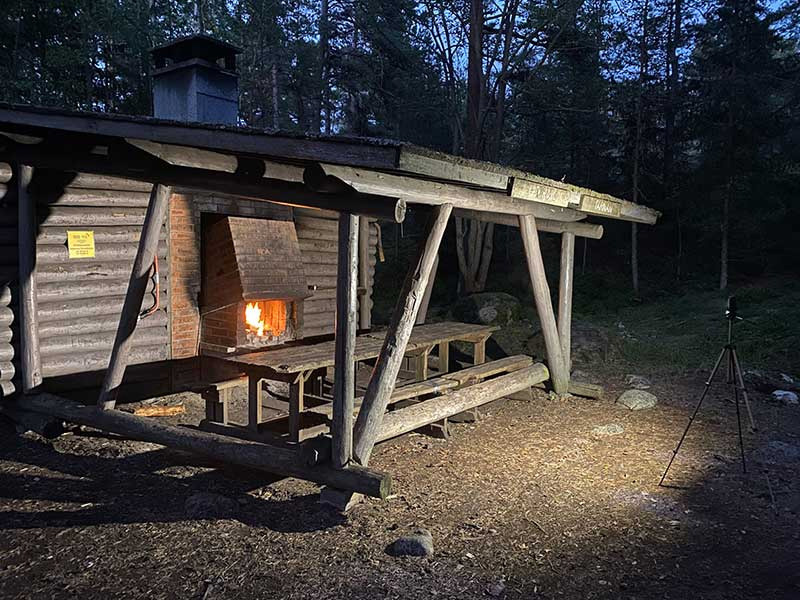
User Interface
The user interface consists of two rotary knobs and a push button located in the middle of the lamp's upper part. The first rotary knob turns on the lamp's white light and adjusts the brightness, while the second adjusts the light's hue. Both rotary knobs are stepless, meaning both intensity and hue can be adjusted freely within the knob's range without distinct steps.
By pressing the push button when the lamp is off, the battery's charge status is displayed using a four-part scale. Hold down the push button for about a second while the light is off to activate the red light. By pressing the push button, you can toggle between flashing and static red light. The red light is turned off by holding down the push button for about a second or by turning on the white light with the rotary knob.
When the white light is turned on, the lamp's broad light is activated. The rotary knob is used to set the desired brightness. By pressing the push button, you can switch from broad light to spot light, then to combined light, and back to broad light. There is no memory function for light type selection, meaning that the white light always starts in broad mode regardless of the last used light type.
With the white broad or combined light on, the hue of the light can be adjusted between cool and warm white using the second rotary knob. Adjusting the hue of the spot light is not possible.
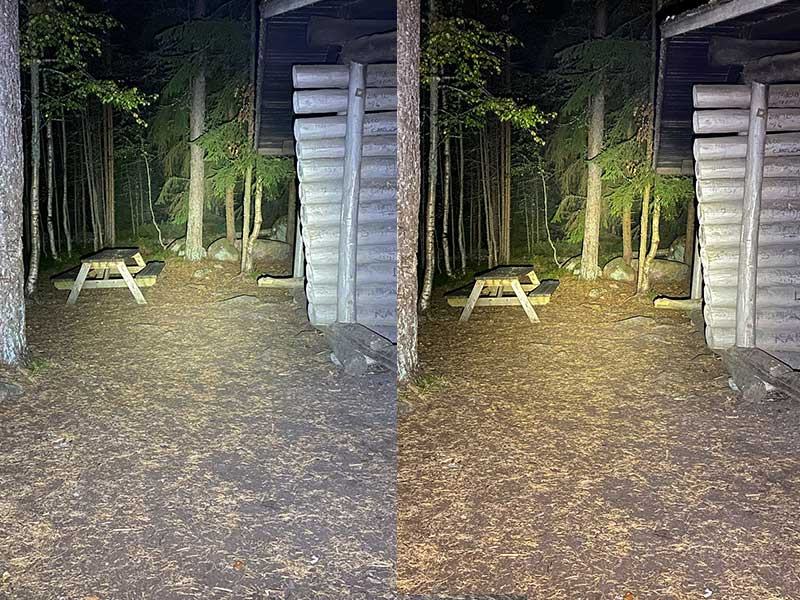
Practical Experiences
The use of the buttons was clear and intuitive, and one quickly learns how to use the lamp. The ability to adjust both brightness and hue steplessly gives the user the freedom to set exactly the settings they desire.
Hanging the lamp on the handle's magnet requires attention when using the buttons to avoid dropping the lamp at the same time. The magnet is powerful and holds the lamp in place, but the lamp can fall if the buttons are used carelessly. A good tactic proved to be holding the lamp in place with one hand while using the buttons on the lamp hanging from the magnet.
Performance and Lighting Features
The broad light output with a maximum power of 1200 lm was best suited for camping conditions, providing effective illumination up close, around 10 m, and acceptable lighting up to about 20 m. The warm white light gave a slightly reddish tone and ambiance, while the cool white light appeared more natural, albeit somewhat sterile. The beam was pleasantly wide, and the ability to adjust the hue was suitable for creating mood as well as optimizing visibility and illumination. According to the manufacturer, the warm white light provides better illumination in rain and fog without dazzling the user. However, we were unable to test this due to the good weather during the testing periods.
The spotlight directed the beam at a long distance but did not provide good close-range visibility. The effective visibility at full power of 800 lm is about 100 m, which doesn't quite match the most effective flashlights, but it is good considering the intended use. Few camping lanterns allow for such long-distance light.
In combination mode, both the wide light and the spotlight are used simultaneously, providing good visibility both up close and a bit farther away with a total output of 1600 lm. Combination mode was best in camping conditions when wanting to extend the wide light's beam and when the lamp was used as a flashlight in motion. The best visibility at a distance was with the spotlight, but the difference from combination mode is very slight. When using the spotlight, the nearby area of the lamp remains in darkness, which can be an advantage in certain lighting situations.
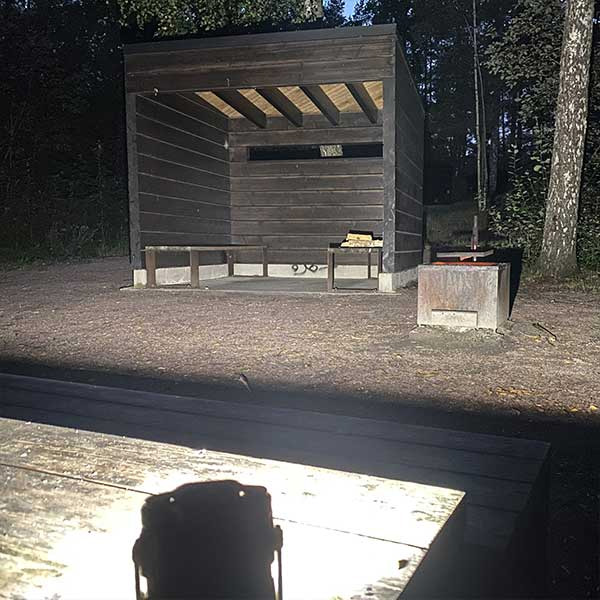
Red Light
The red light was not particularly effective and is suitable only for close-range illumination. It is good for signaling and is visible from a distance. The flashing red light works best, for example, in emergencies.
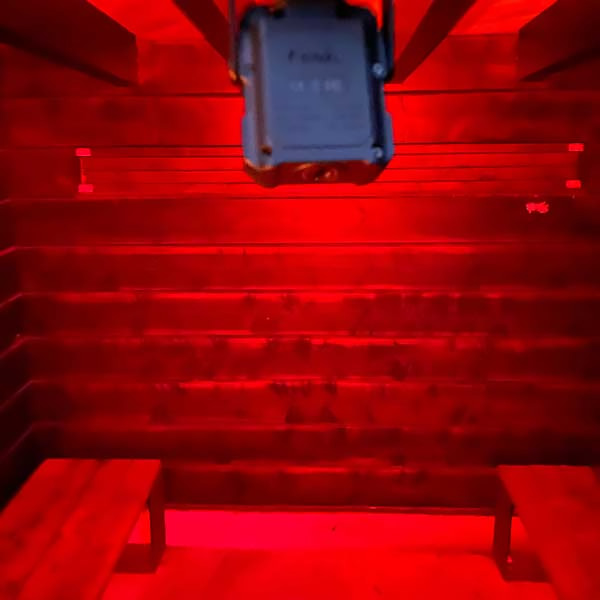
Function of the Tripod Mount and Use as a Flashlight
We also tested the lamp mounted on a camera tripod. The tripod mount opens up entirely new possibilities for using the lamp. It can be used to illuminate the campsite while hiking, set up tents, serve as work lighting, assist in photography, and really for any purpose where hands-free lighting is needed. The CL27R’s higher brightness compared to a regular camping lantern was sufficient for use with a tripod and provided good close-range illumination.
The tripod mount also allows for placing the lamp high enough to achieve effective lighting. Thanks to the lamp's low weight, it can be used on even the lightest camera tripods for mobile use, meaning that the weight of the tripod does not increase significantly. It is highly recommended to acquire a camera tripod along with this lamp if one does not already have a suitable tripod in their collection.

Use as a Flashlight
The lamp also functions as a replacement for a flashlight, where the usage was quite comfortable, especially with the handle facing backward. When the lamp is used at full power, its body becomes warm, so it is important to be cautious when touching it. The handle insulates the heat, and the lamp can be held by the handle even if the body is warm.
Summary
The Fenix CL27R elevates the functionality of camping lanterns to a whole new level. It combines good brightness, intuitive use, and versatile lighting features with a smart handle joint. This allows the lamp to be used as work lighting, a tool for photography, and for any application where hands-free lighting is needed. Additionally, the lamp is compact and truly stylish, and its runtime can be extended with an external power source. The price is also quite reasonable considering its features.

